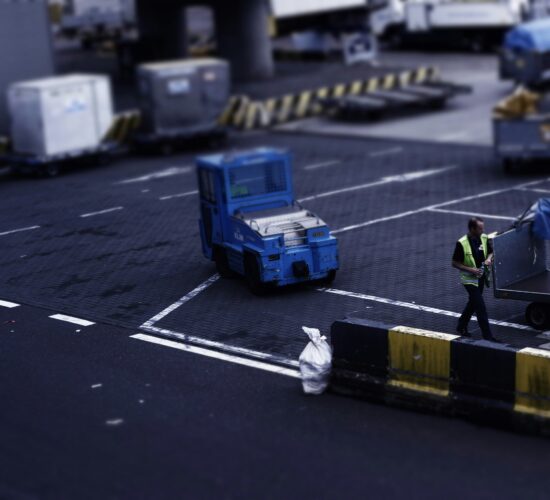The Top Technology Tools That Strengthen Logistics Security

Logistics drives the flow of modern trade. Goods move across countries, oceans, and cities. With every mile traveled, the risks increase. Theft, cyberattacks, delays, and compliance failures all pose significant threats to the smooth delivery of products. To keep operations safe, companies rely on technology tools that secure their networks, fleets, and warehouses. These tools do not just protect cargo. They also build trust, cut losses, and keep businesses competitive in a global market.
Digital Shields for Supply Chains
Security in logistics once meant locks, guards, and fences. Now it also means digital shields. Hackers see supply chains as tempting targets because they hold sensitive data. Advanced software now protects this information. Encrypted communication ensures that orders, routes, and invoices remain private. Real-time monitoring systems flag suspicious activity before it causes damage. Firewalls and secure cloud platforms add another layer of safety. When companies combine these tools, they create strong barriers that guard both goods and data.
Smarter Tracking with IoT Devices
Small devices now play a big role in logistics security. Internet of Things (IoT) sensors track cargo from the moment it leaves a warehouse. These sensors send live updates about location, temperature, and movement. If a truck makes an unscheduled stop or a container’s seal breaks, alerts go out instantly. Managers can then respond without delay. By increasing visibility, IoT reduces theft and helps companies demonstrate compliance with shipping regulations. The result is safer deliveries and stronger customer confidence.
Eyes on the Ground with AI Cameras
Warehouses and loading docks are busy places. Traditional cameras once recorded what happened, but they could not interpret events. Now, artificial intelligence gives cameras sharper eyes. AI-powered systems spot unusual behavior, like unauthorized entry or cargo left in the wrong place. They can also detect safety risks, such as blocked exits or spills. Instead of reviewing footage after an incident, managers receive real-time alerts. This proactive approach prevents problems before they grow.
Blockchain for Transparent Records
Trust is vital in logistics. Every shipment passes through many hands, and mistakes or fraud can easily slip in. Blockchain technology creates secure and transparent records of each transaction. Once entered, data cannot be changed or erased. This makes it easy to trace the journey of goods from origin to destination. If a shipment gets delayed or tampered with, the records reveal where the problem occurred. By removing uncertainty, blockchain builds accountability and confidence across the supply chain.
Biometric Access for Sensitive Areas
Warehouses often store high-value goods. Protecting them requires more than keys or passwords, which can be stolen or shared. Biometric tools offer a stronger solution. Fingerprint and facial recognition systems allow only authorized people to enter restricted areas. Unlike keys, biometric traits cannot be copied. These systems also keep clear logs of who entered and when. This reduces insider threats and ensures that only trusted staff handle sensitive cargo.
Fleet Safety through Telematics
Drivers face risks on the road every day. Telematics systems protect both drivers and cargo. These tools track vehicle speed, route choices, and rest breaks. They also monitor conditions like tire pressure and fuel use. If a truck shows signs of danger, alerts go to the control center. Quick action can prevent breakdowns or accidents. By improving driver habits and vehicle health, telematics strengthens the security of the entire journey.
Cybersecurity for Connected Systems
The rise of digital platforms links warehouses, fleets, and customers more closely than ever. This connection also expands the attack surface for cybercriminals. Strong cybersecurity tools safeguard these systems. Multi-factor authentication ensures that only verified users gain access. Regular updates close the door on vulnerabilities. Security software scans networks to detect intrusions before they spread. By treating cybersecurity as core to logistics, companies shield both data and operations from disruption.
Smart Locks and Digital Seals
Locks have always been part of logistics security. Today’s locks are much smarter. Digital seals on containers track when they are opened and by whom. If someone tampers with a shipment, managers know immediately. GPS-enabled locks can even trigger alarms if a container moves outside its planned route. These tools offer both physical protection and digital oversight. They also simplify audits by creating records of every interaction with cargo.
Cloud Platforms for Central Control
Large logistics networks generate vast amounts of information. Storing it in separate systems creates blind spots. Cloud platforms solve this by gathering data in one secure space. Managers can see fleet locations, warehouse inventory, and delivery status all at once. With built-in security features, cloud platforms protect this data from breaches. Central control enables a faster response to risks and facilitates coordination across global operations.
Data Analytics for Predictive Security
Data is more than numbers. When analyzed, it becomes foresight. Logistics companies use analytics to predict risks before they occur. For example, by studying past theft patterns, they can identify high-risk routes. Predictive models can also forecast weather disruptions or port delays. This allows managers to adjust schedules and reroute shipments in advance. Data analytics turns raw information into proactive security strategies.
The Human Role with Digital Tools
Technology tools are powerful, but people remain at the heart of logistics security. Staff need training to use these systems effectively. Drivers must know how to respond to alerts from telematics. Warehouse workers must understand biometric checks and camera systems. Cybersecurity awareness among employees reduces the risks of phishing or careless mistakes. When human vigilance meets advanced tools, logistics security reaches its full strength.
Future Directions
Technology keeps evolving, and so does logistics security. Artificial intelligence will soon predict risks with even greater accuracy. Blockchain could expand into smart contracts that trigger automatic payments after secure deliveries. Drones may patrol warehouses or escort trucks for added safety. As threats change, the tools will adapt. Companies that embrace these advances will not only protect their operations but also gain an edge in speed, trust, and efficiency.
Additional Information
- Blogs
- facial recognition, modern trade, secure deliveries
- Ari Raptis